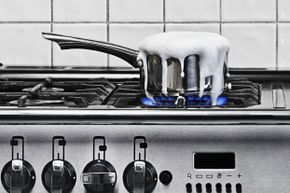In 2002 the government of the northern Italian region of Piedmont declared panna cotta to be a traditional Piedmontese dessert, but you don't have to travel to Italy to spoon into a perfect bowl of the jiggly, delicate dessert. You can make a perfect panna cotta in your own kitchen, and with just three basic ingredients -- gelatin, cream and sugar. If you can stir it, you can make it. You see, despite its delicate consistency and presentation, panna cotta is really just a pudding -- translated, its name means "cooked cream" -- and it's fairly customizable; adjust the sugar to your taste, add your favorite extracts or other flavorings, and don't be shy experimenting with the kind of milk (or cream) for a richer or dairy-free dessert.
Advertisement





